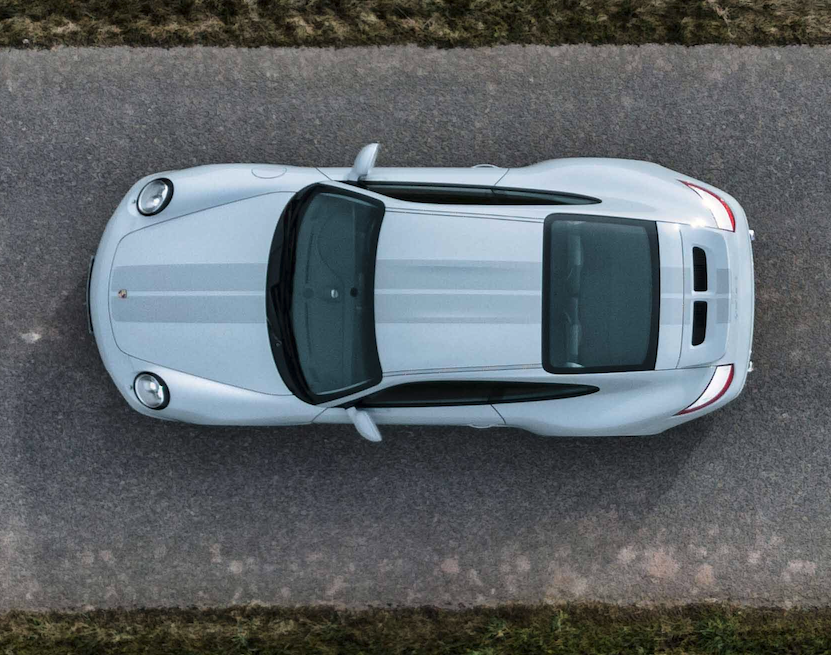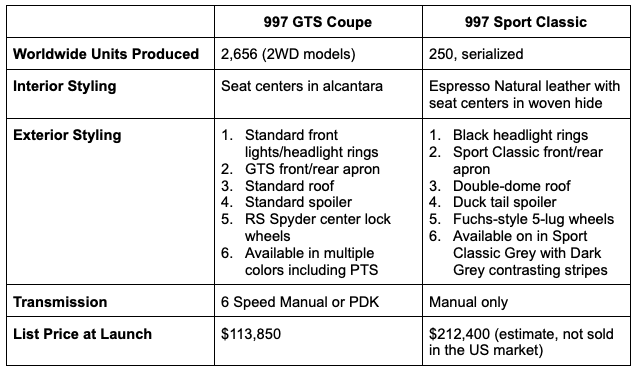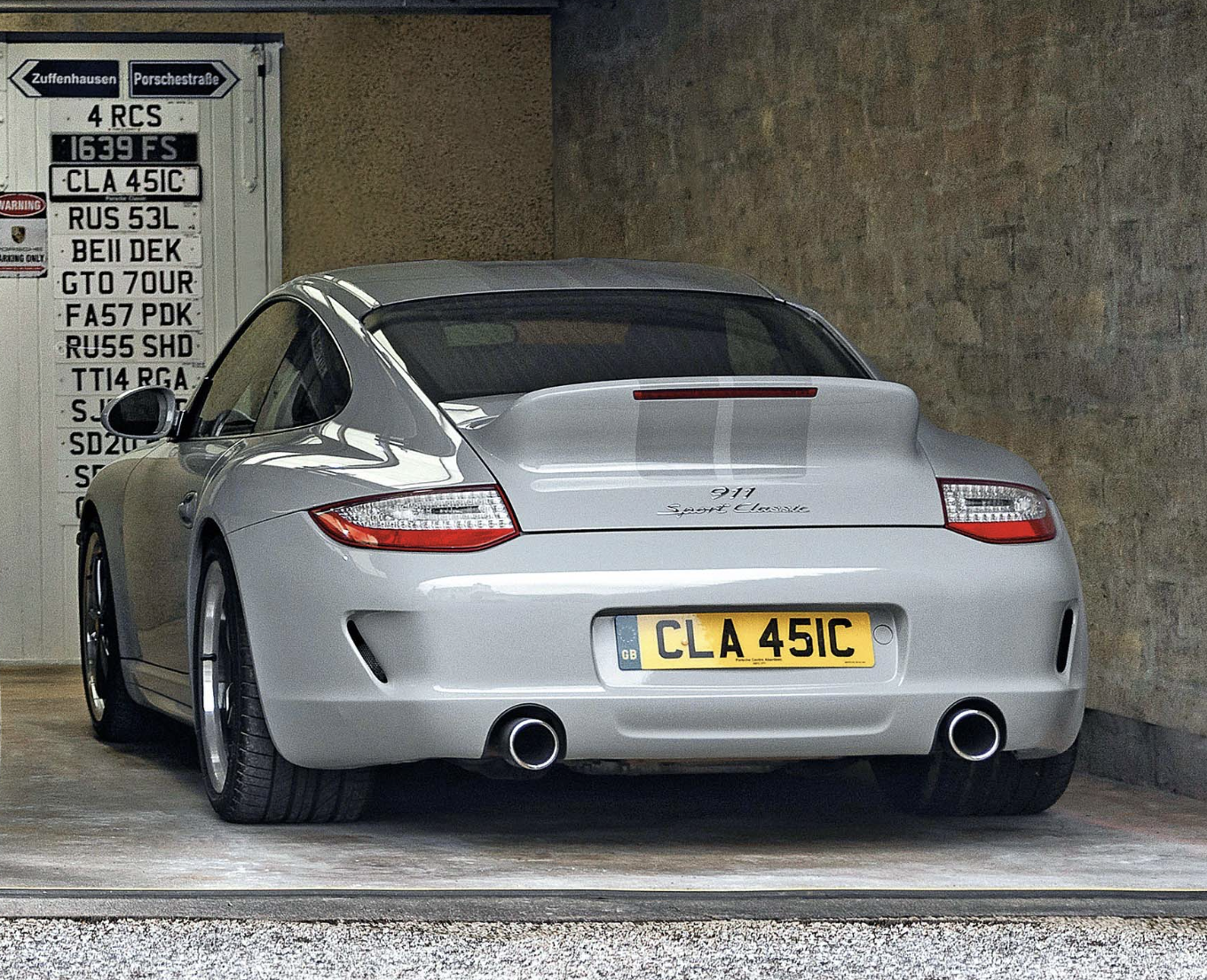
The 997 GTS Coupe is a Sport Classic for Drivers
The 997 GTS Cabriolet and the 997 Speedster have always struck me as fraternal twins, a relationship echoed by the GTS Coupe and the Sport Classic. Released in January 2010, the wide body, naturally aspirated 997 Carrera—known as the Sport Classic—helped fund the development of the GTS model, illustrating more than just coincidental timing. Perhaps older brother is a better analogy.

Mechanically, the GTS Coupe and the Sport Classic are the same car with their key differences related mostly to cosmetics. The following table outlines key differences:

Two of the more notable styling changes, the duck tail spoiler and Fuchs-style wheels, are instantly recognizable as throwbacks to the iconic ‘73 RS. The Sport Classic also has a unique double-dome roof. This subtle addition explains why the car was not offered in the US market. To save on development costs, Porsche opted out of the homologation process for the special roof. Still, a few cars have changed hands in the US under the show & display law which allows certain vehicles to be in the country even if they do not meet safety or emission standards. We know of at least three cars in the US with one having been sold in 2019 and two sold in 2023.

Like the Speedster, the Sport Classic carries a hefty premium over it’s GTS analog meaning it’s unusual to actually see a Sport Classic on the road. With only 250 units produced, the Sport Classic is exceptionally rare, even by Porsche standards. According to CLASSIC.COM Market Benchmark data, there’s a significant price disparity between the GTS Coupe and the Sport Classic:
Luckily, with aftermarket duck tail spoilers and Fuchs-style wheels, enthusiasts can enjoy the Sport Classic’s distinctive styling on a GTS Coupe without breaking the bank—preserving the thrill of driving these remarkable cars.